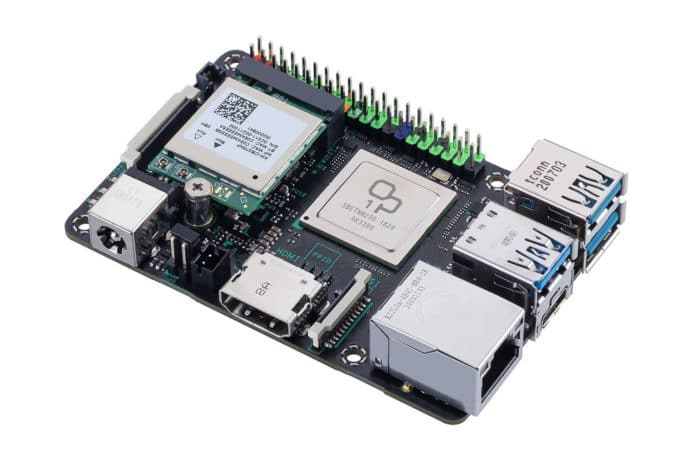Single Board Computers (SBCs) have grown in popularity in recent years thanks to the Raspberry Pi. In 2017, Asus had introduced a competitor called Tinker Board, and now we have the second generation board with two model options.
The Arm-based SBCs called the Tinker Board 2, and the Tinker Board 2S are exactly the same except for one feature: the 2S includes 16GB of eMMC storage and a Micro SD card slot, while the Tinker Board 2 only includes the Micro SD card slot.
Both boards use the Rockchip RK3399 64-bit SoC, which consists of a dual-core ARM Cortex-A72 running at 2GHz and the quad-core ARM Cortex-A53 running at 1.5GHz. The GPU is an ARM Mali-T860 MP4 running at 800MHz, and there will be two memory options available: 2GB and 4GB of dual-channel LPDDR4 RAM. The Tinker Board 2S comes with 16GB built-in flash memory, which should be faster than typical micro SD cards.
Power is supplied via a 12V-19V DC cylindrical jack instead of the classic micro USB connector used in the previous generation. There are both USB3 Type-C and Type-A interfaces, as well as a single full-size HDMI output with support for up to 4K resolution at 60Hz. An additional DisplayPort 1.2 output is provided via the USB C port.
The Tinker Board supports network connections either via cable via the Gigabit Ethernet port or wirelessly using the next-level 802.11ac Wi-Fi with 2×2 dual-band 2.4/5 GHz antennas that deliver transfer speeds that are up to 10X faster than previous Wi-Fi standards. Tinker Board 2S also has the latest Bluetooth 5.0 technology built-in, so you’ll enjoy speeds that are up to 2X transmit speeds and with up to 4X-greater range. It is possible to connect Bluetooth devices or electronic components using the 40-pin GPIO header, which appears to share the same layout as a Raspberry Pi, but compatibility is currently unknown.
The expected performance gain over the original Tinker Board by up to 28%, and Asus supports Debian 9 Linux and Android 10, although Android support is not expected until the first quarter of 2021. We do not yet know the pricing or the official release date.
